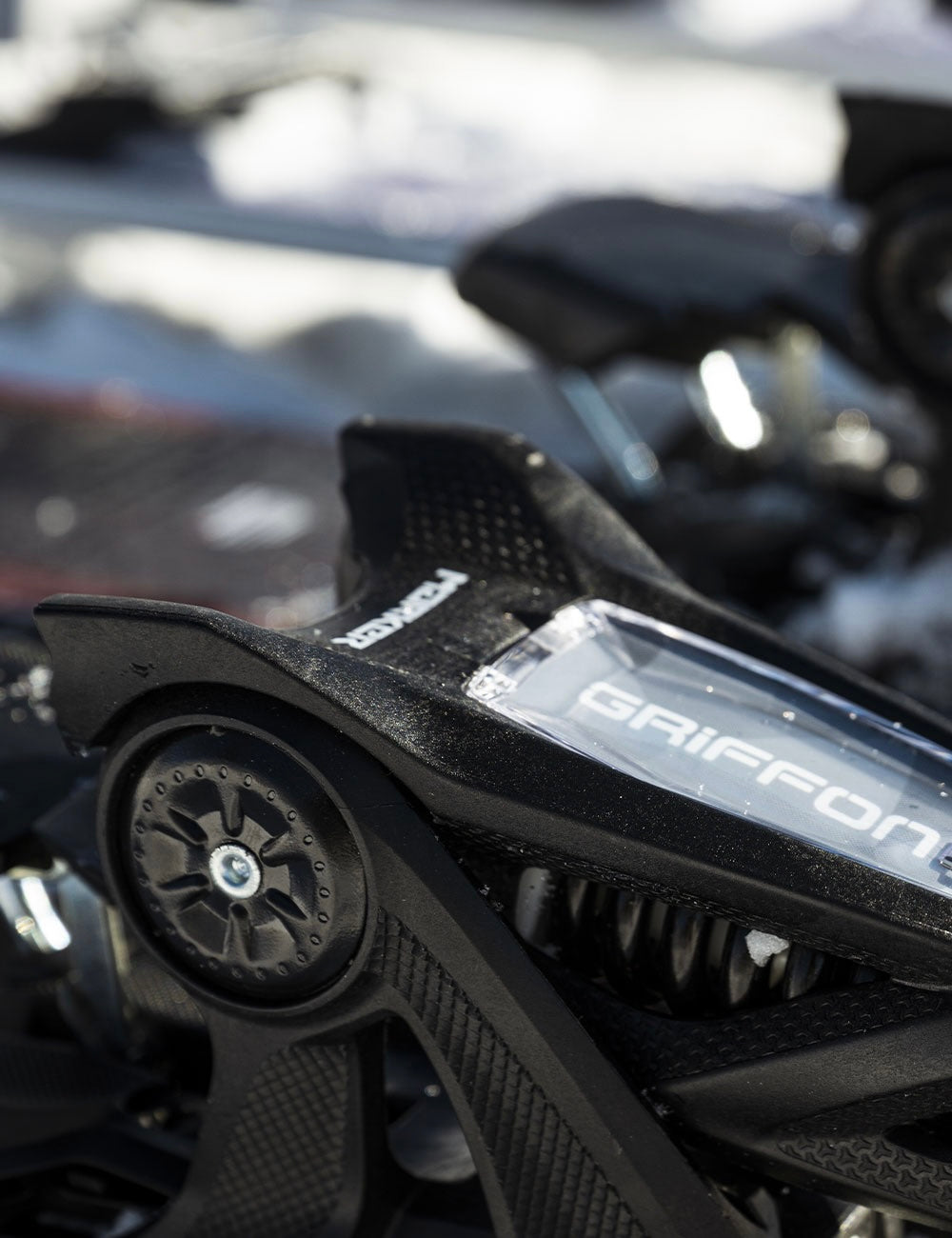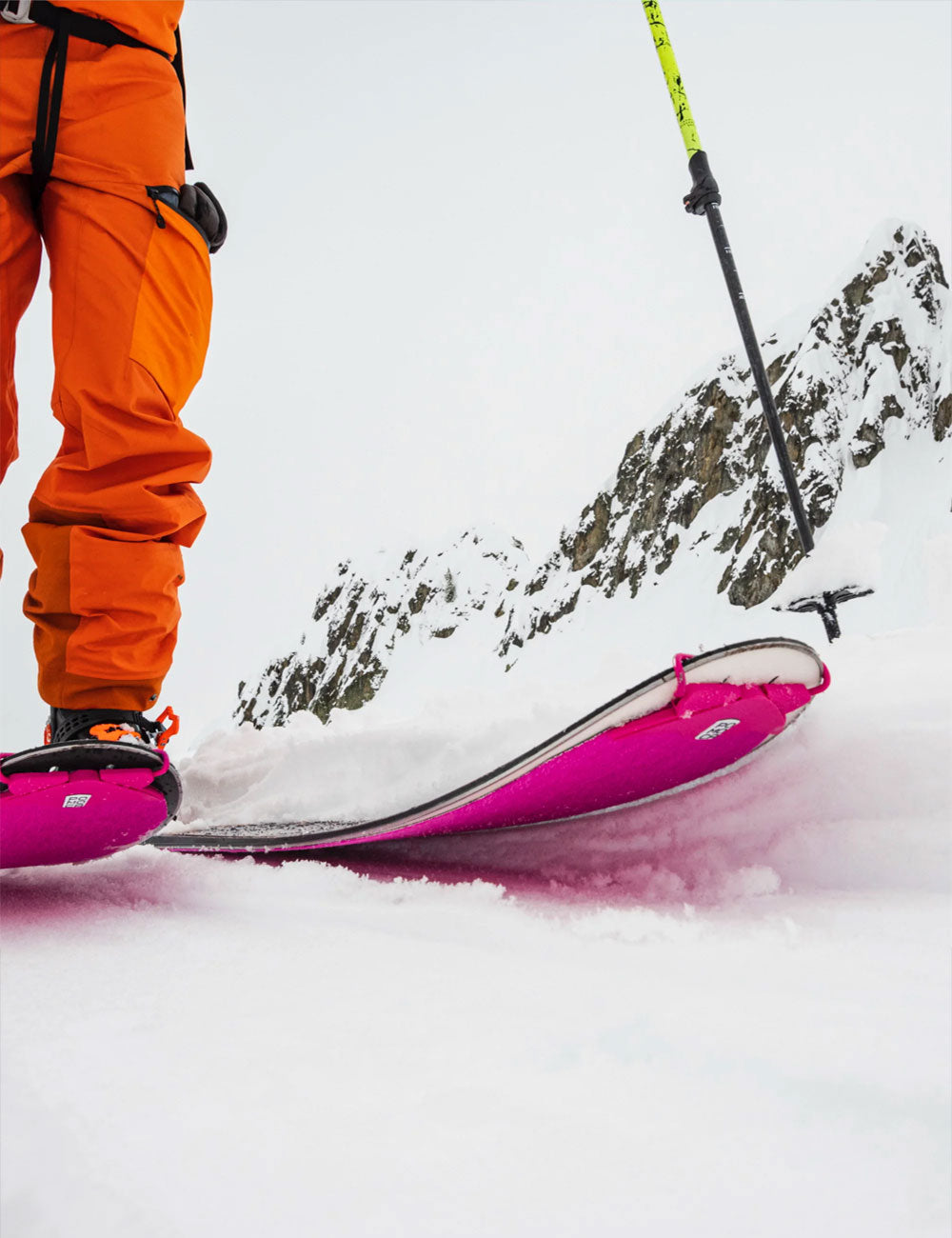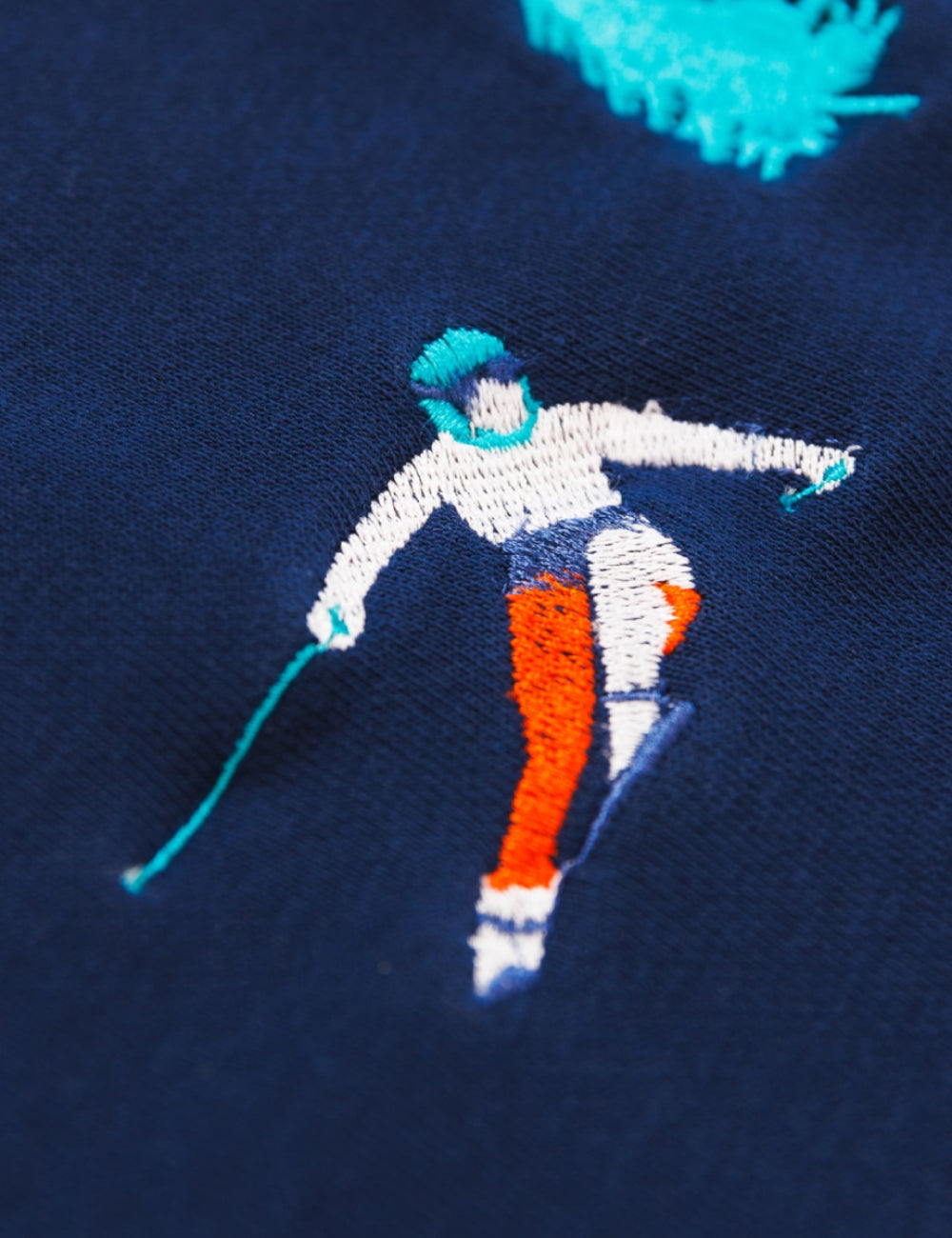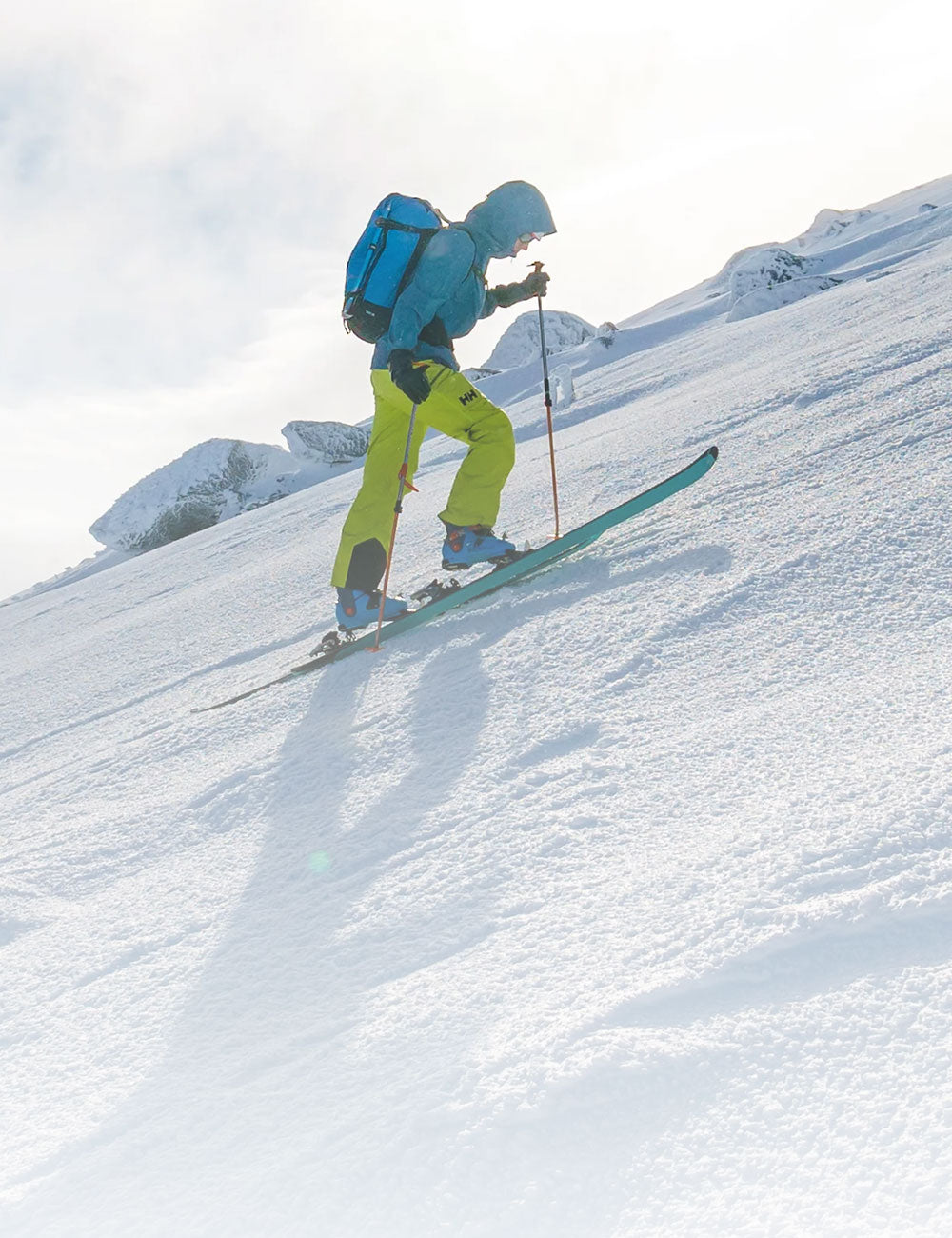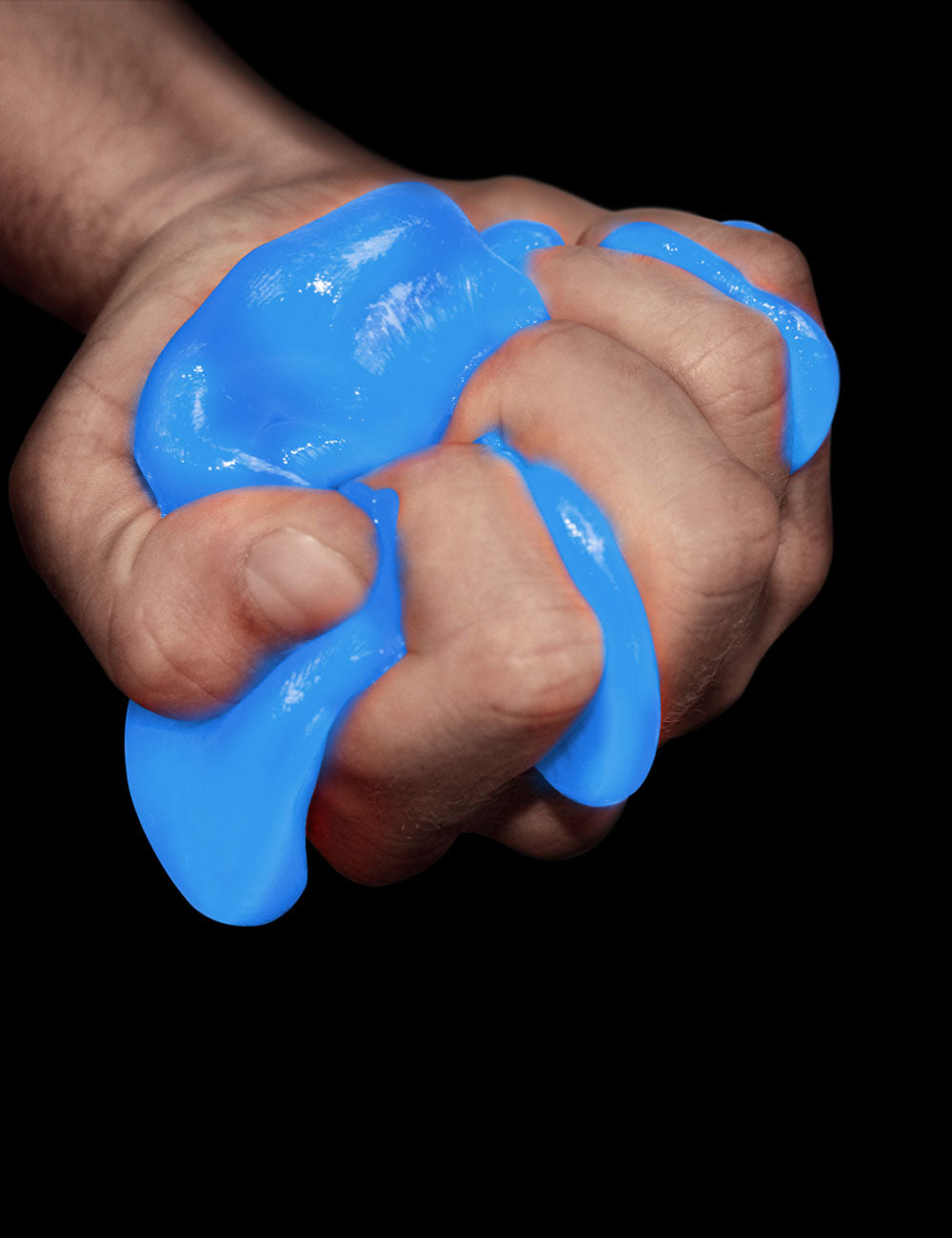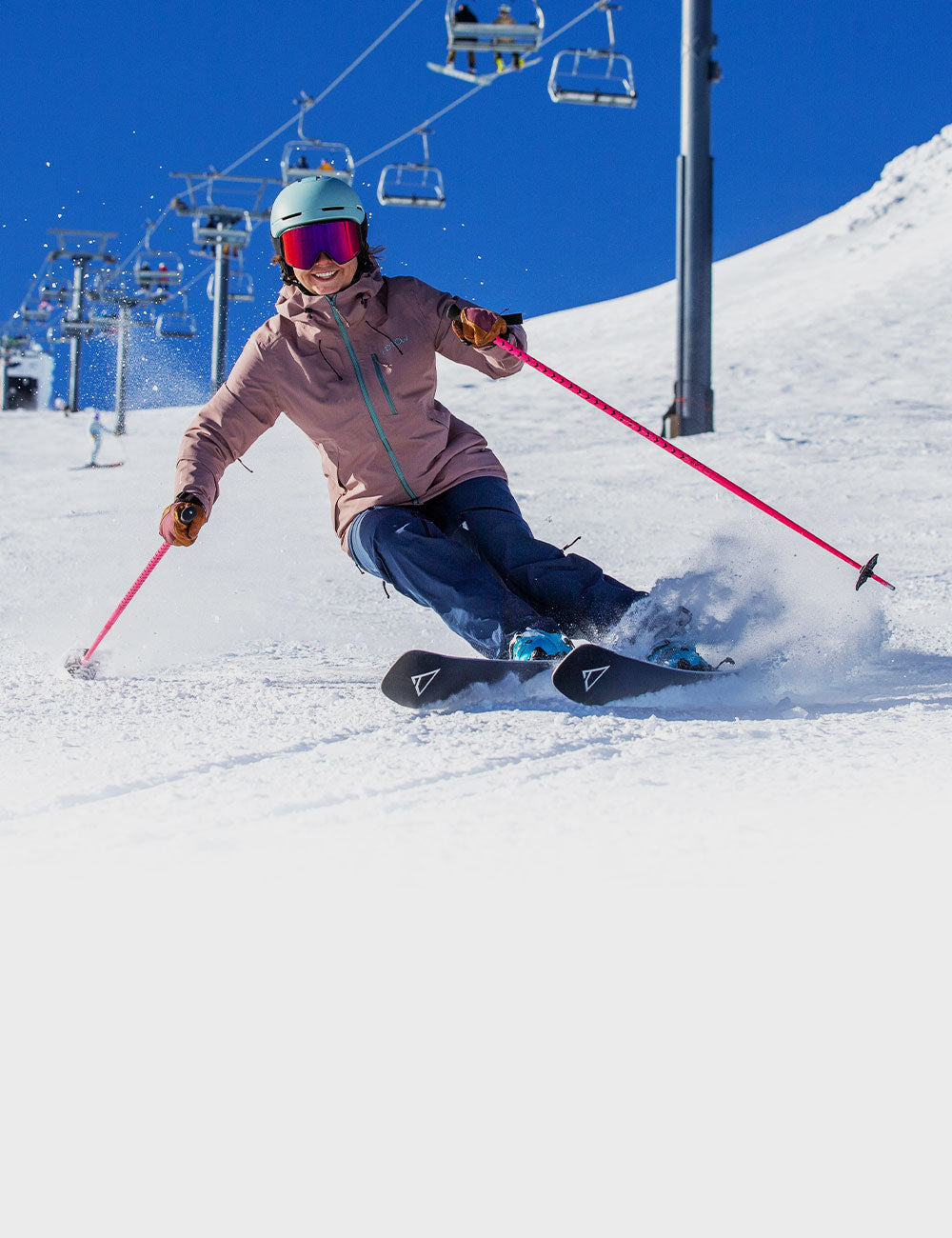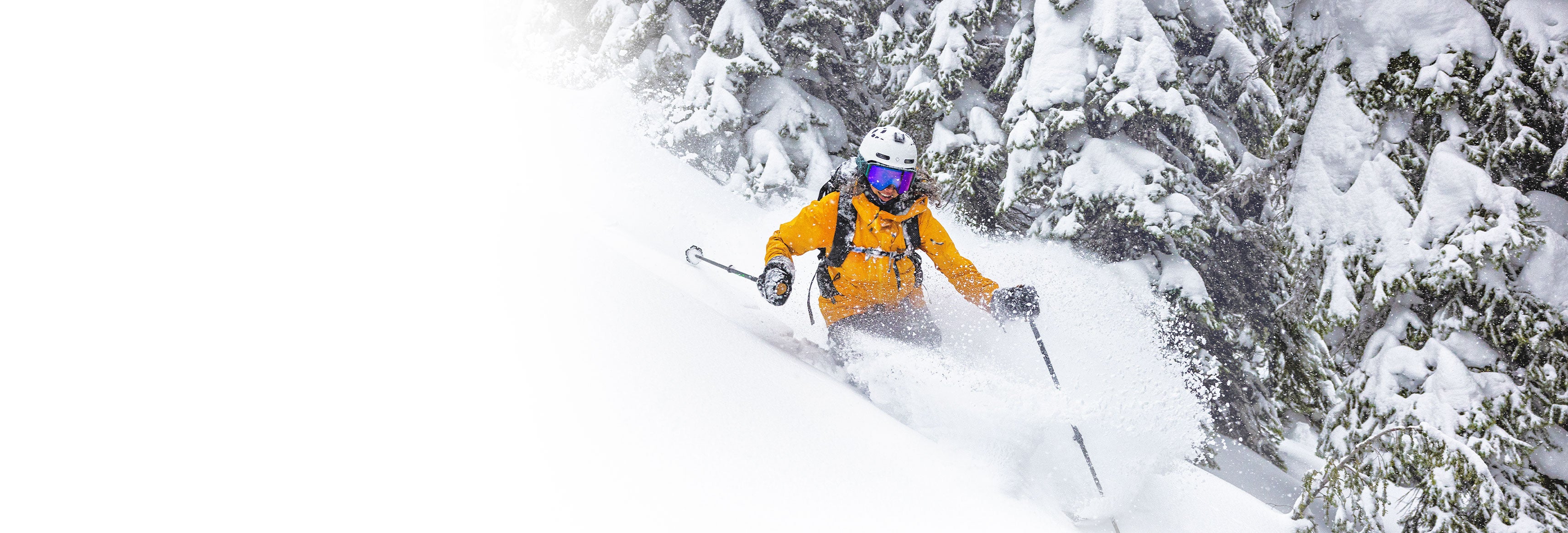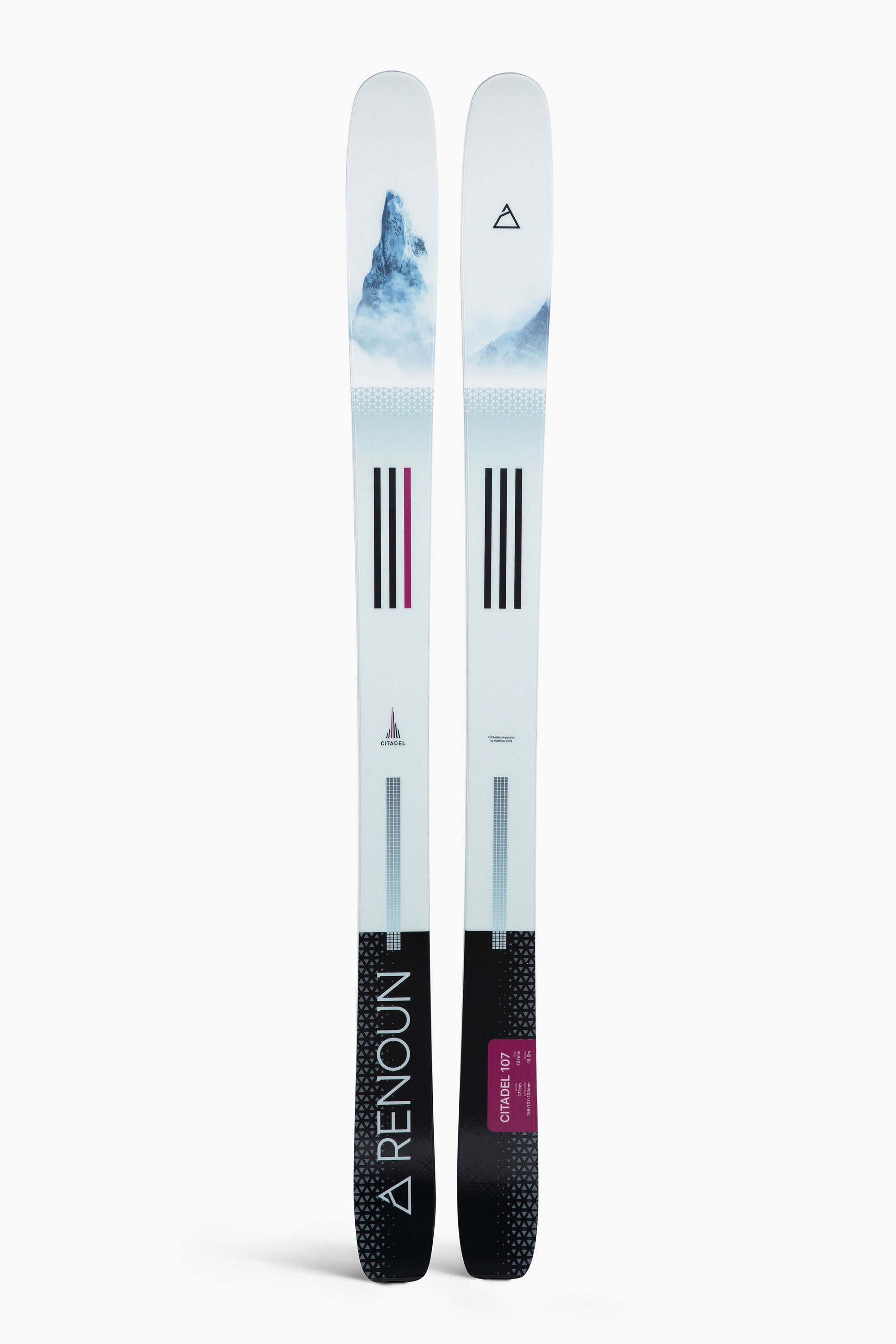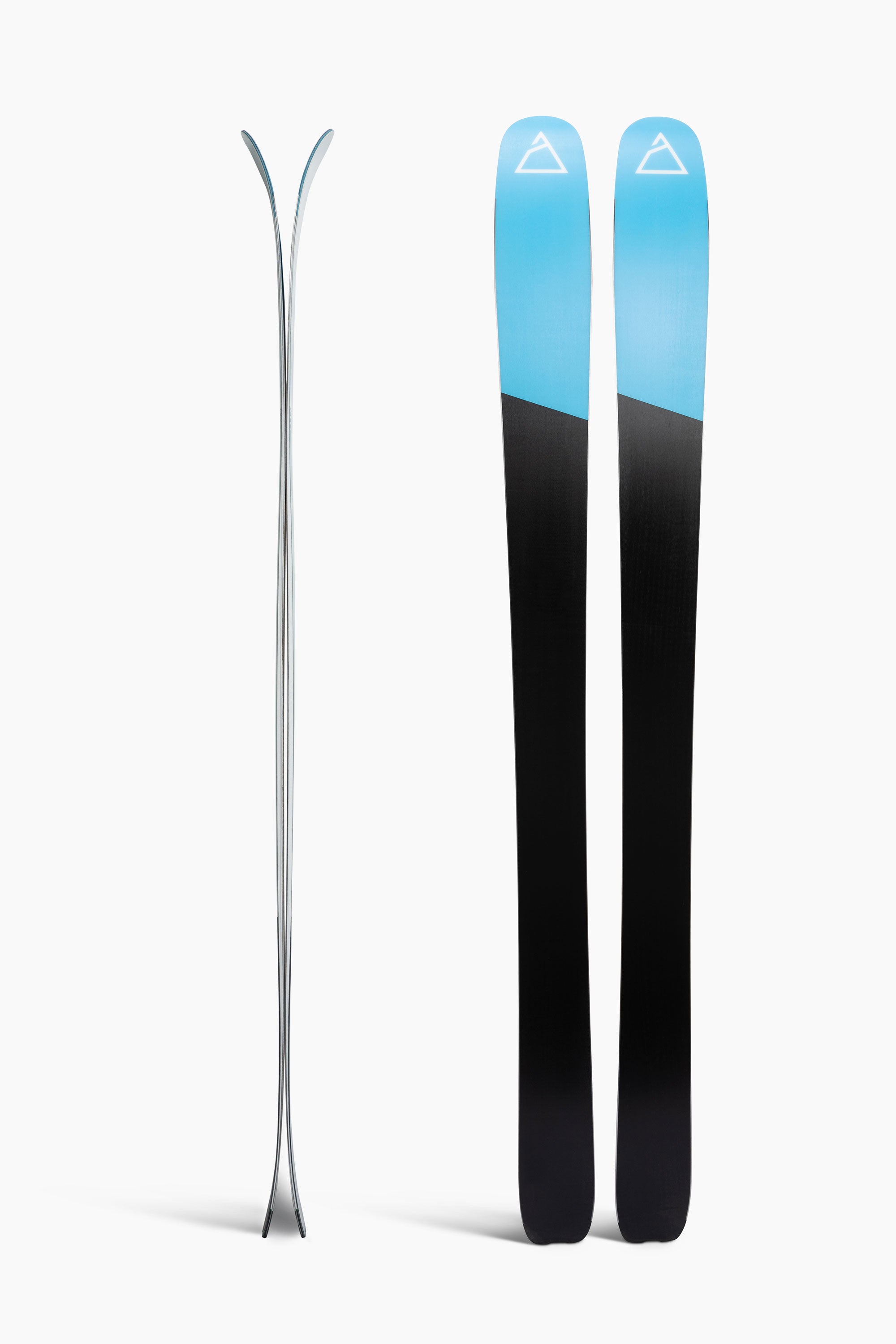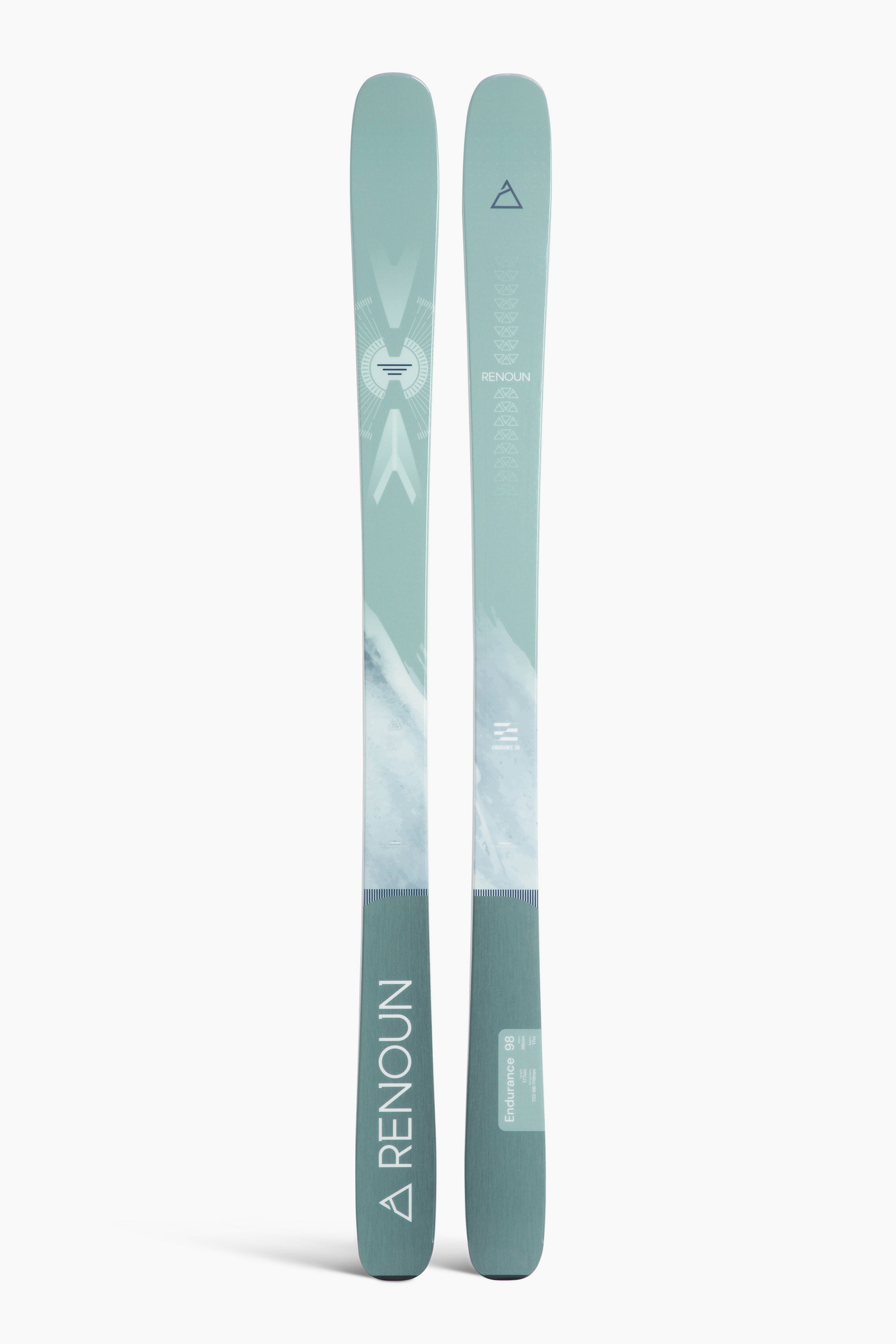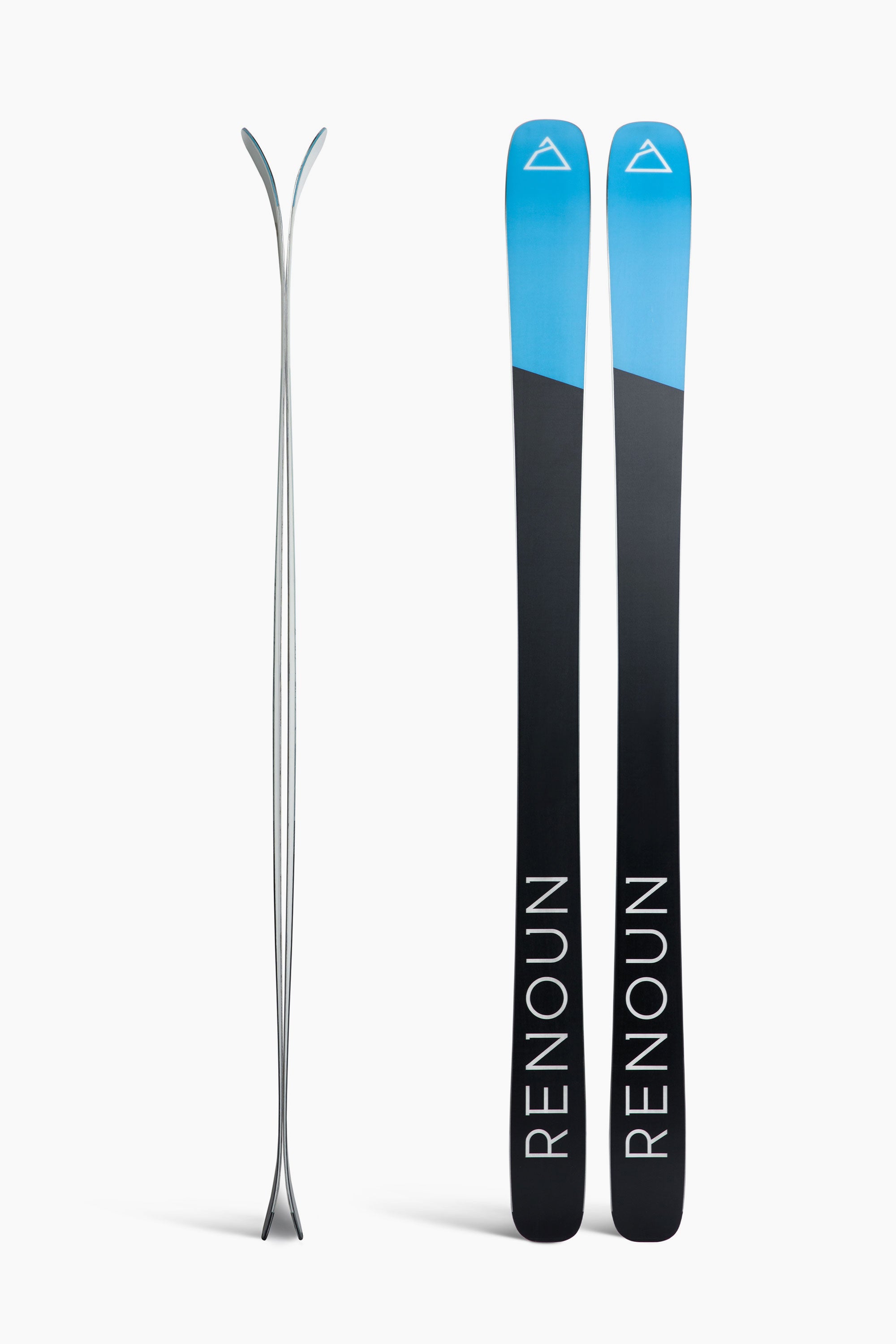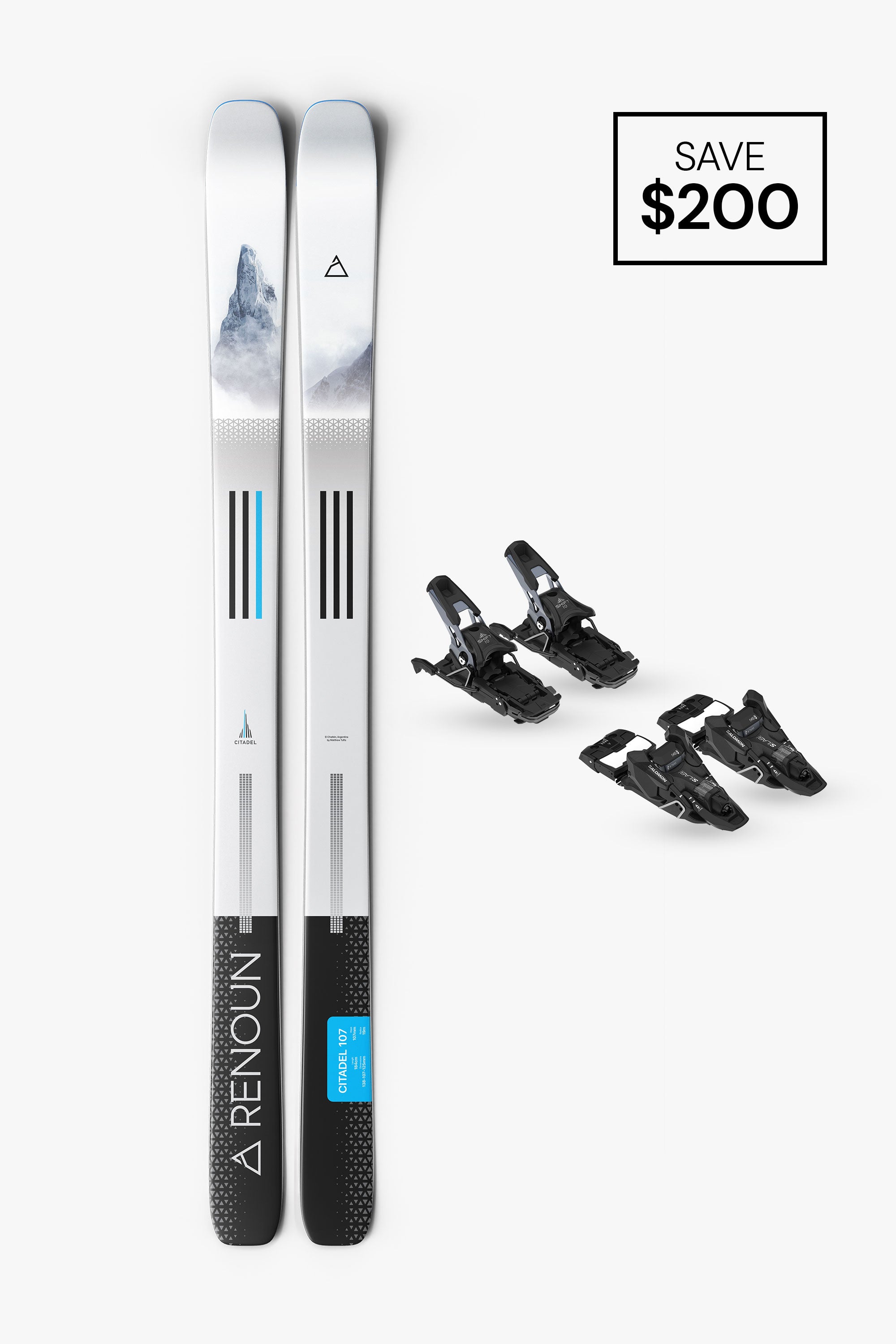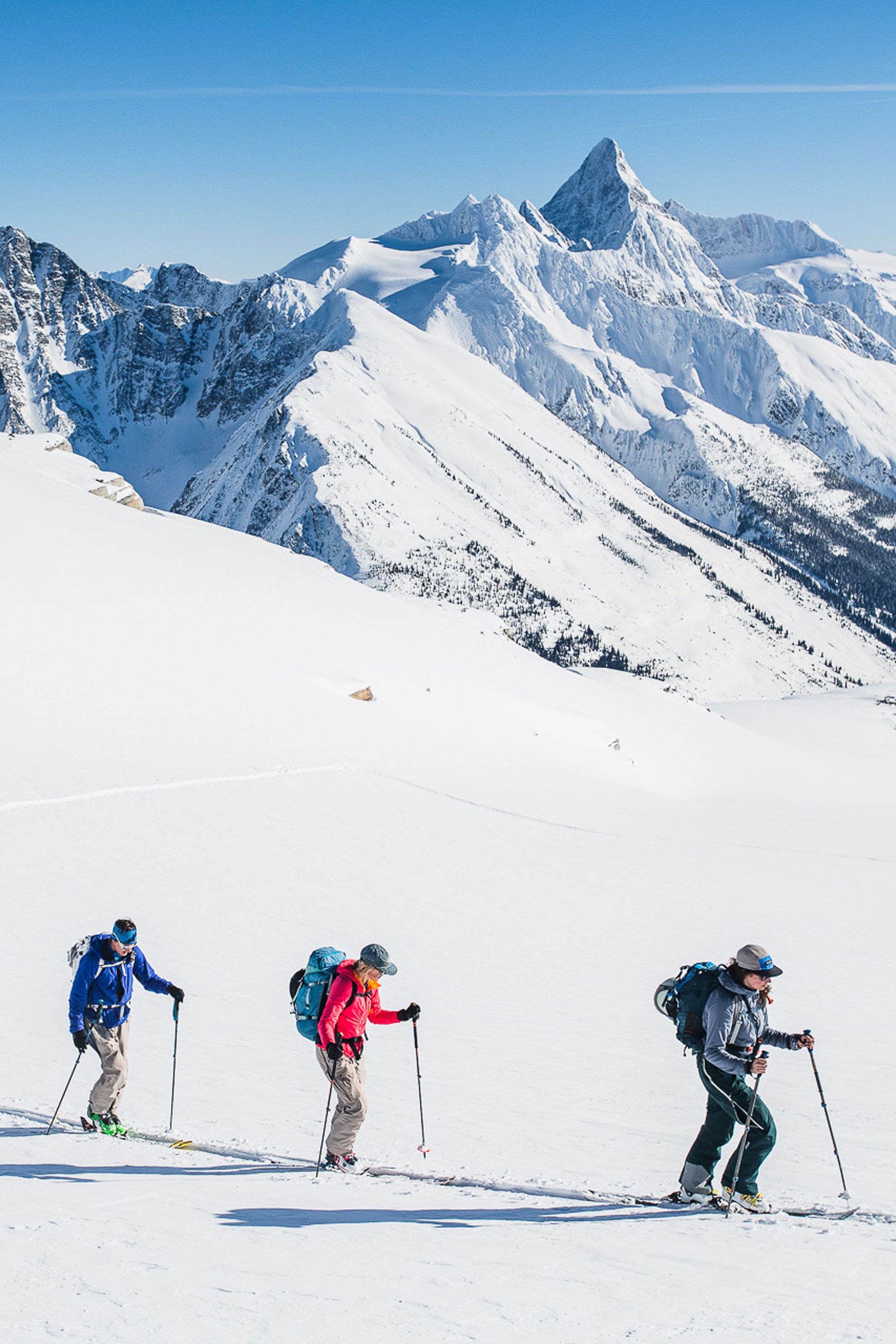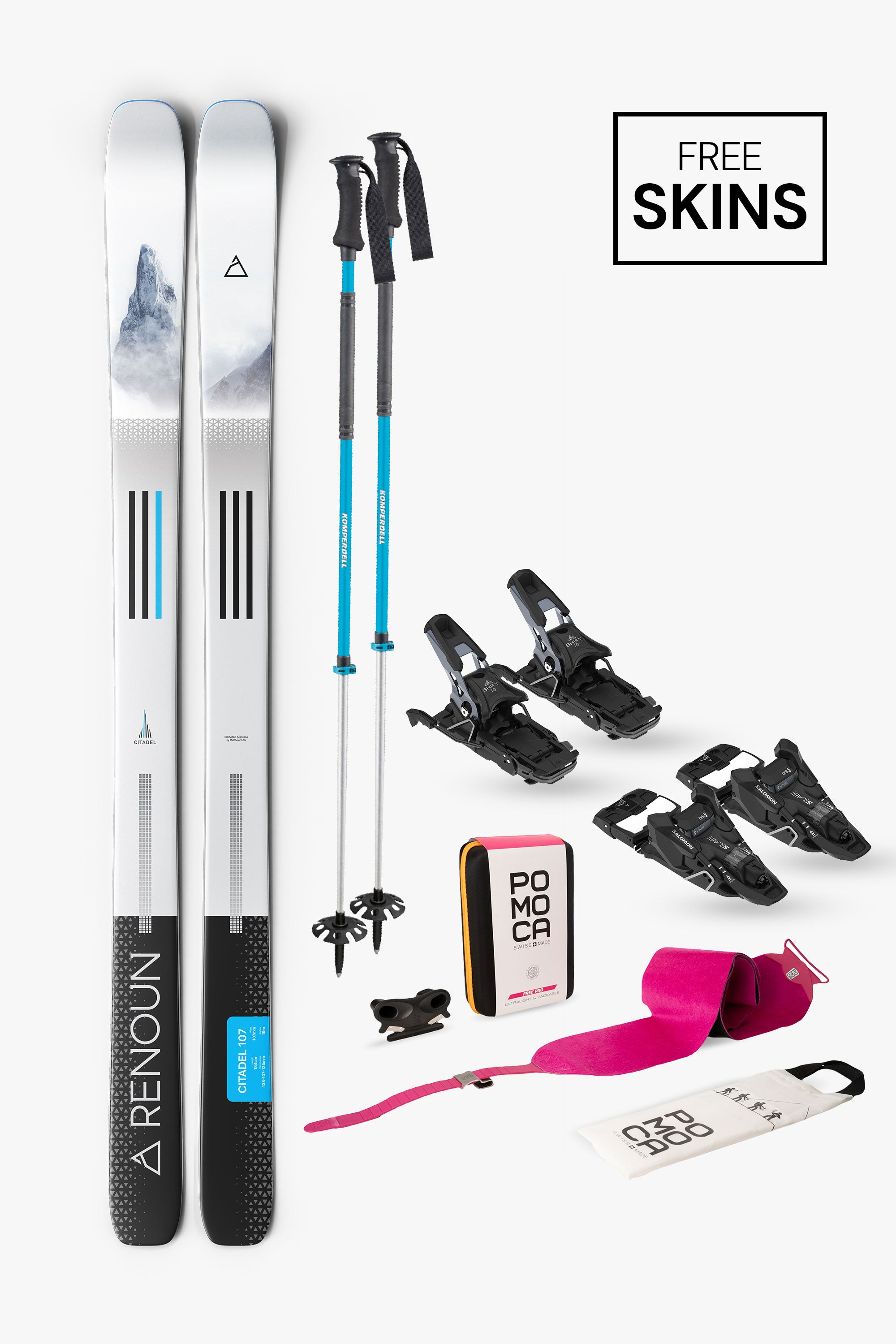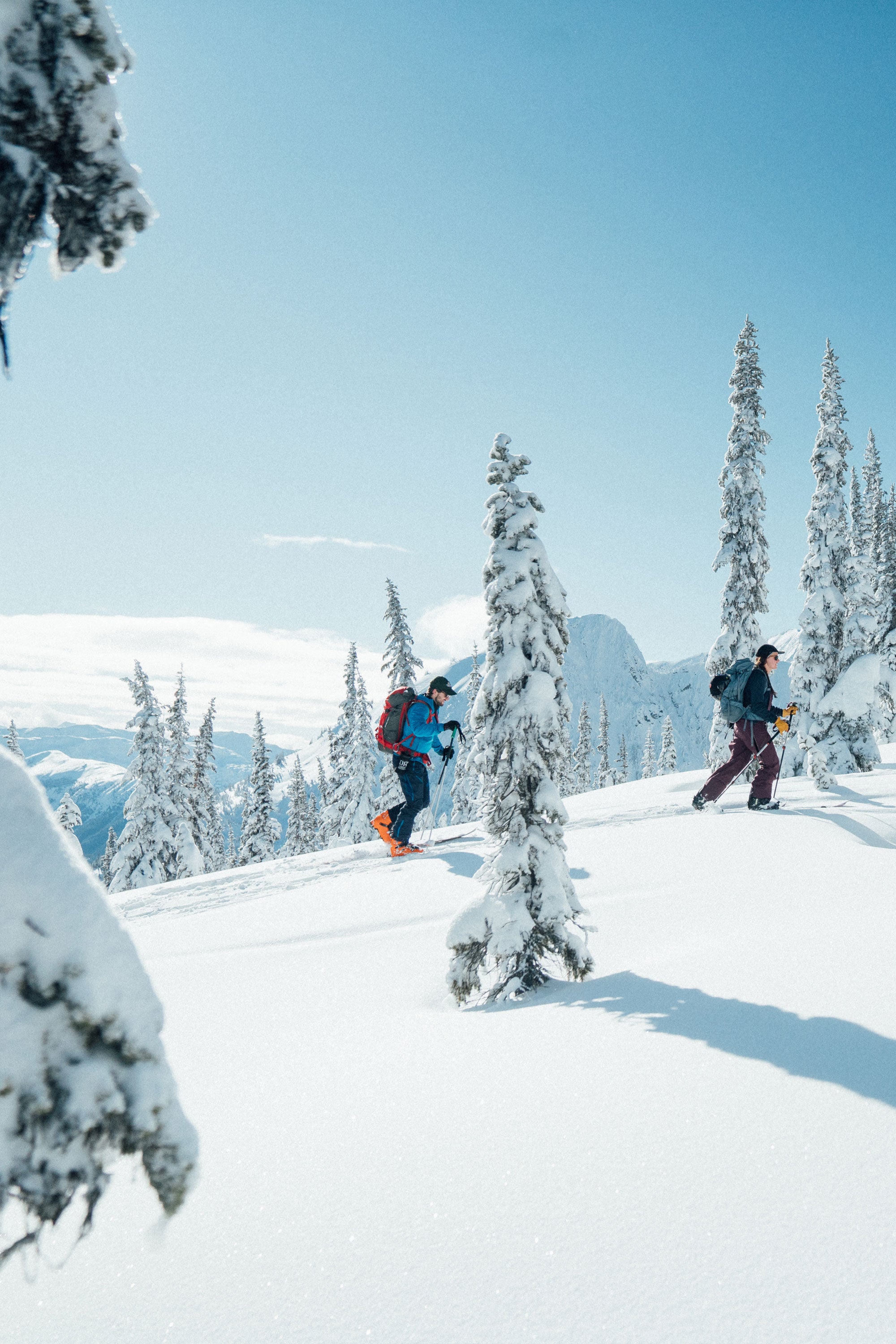Renoun Powder Skis
Powder skis are purpose-built for deep snow days when fresh snowfall transforms the mountain. Renoun's Citadel model features a wide profile and rockered geometries to deliver effortless float and playful maneuverability in deep conditions. Whether you're a backcountry explorer or resort powder hound, these skis turn epic snow days into unforgettable experiences.
4 products
Powder
All-Mountain
Touring Bundle
Touring
Touring Bundle
Touring
Need Help Deciding
Powder skis are specialized tools designed for specific conditions. Consider how many true powder days your resort averages per season and whether these will be your only skis or part of a multi-ski quiver. Your choice should reflect actual usage patterns rather than aspirational skiing.
Honest self-assessment matters: Many skiers purchase powder skis too wide for their actual usage patterns. If you ski powder fewer than 10-15 days per season, consider a wider all-mountain ski, like the Endurance 98, that handles powder adequately while excelling in daily conditions. Demo skis in actual deep snow to assess float, maneuverability, and the leg strength wide skis demand over a full day.
You can also try our ski finder to find the perfect ski for you, or explore our all-mountain skis if you need more versatility, or touring skis if backcountry access is your priority.
Honest self-assessment matters: Many skiers purchase powder skis too wide for their actual usage patterns. If you ski powder fewer than 10-15 days per season, consider a wider all-mountain ski, like the Endurance 98, that handles powder adequately while excelling in daily conditions. Demo skis in actual deep snow to assess float, maneuverability, and the leg strength wide skis demand over a full day.
You can also try our ski finder to find the perfect ski for you, or explore our all-mountain skis if you need more versatility, or touring skis if backcountry access is your priority.
Width
107mm
underfoot
98mm
underfoot
Specialty
Best for skiers who want the ultimate powder day ski. Wide enough to float, carvable when there isn't powder, and light enough to tour easily.
All-Mountain ski. Better if you want to ski many terrain types throughout your day or season.
Men's or Women's
All-Gender
All-Gender
Less chatter. Better grip.
Learn about VibeStop™What Makes a Great Powder Ski?
Waist Width & Float
Powder ski design prioritizes surface area to keep you on top of deep snow. Waist widths typically range from 105mm to 130mm+, with wider profiles providing more float but requiring stronger technique and leg strength.Rocker Profile & Shape
Early rise tips (tip rocker) are essential for powder skiing, allowing the ski to plane on top of snow rather than diving underneath. Most powder skis feature:- Tip rocker: Dramatic early rise for effortless turn initiation
- Tail rocker: Variable amounts depending on intended use (more for playfulness, less for stability)
- Minimal camber: Just enough underfoot for edge control on firmer snow
Construction Considerations
Advanced powder skiers appreciate lightweight construction that reduces fatigue during deep-snow skiing. Wood cores remain standard for energy and feel, while carbon fiber reinforcement increasingly appears in backcountry-oriented models for weight savings. Softer flex patterns enhance playfulness and float, though stiffer options suit aggressive skiers who charge hard.Taper & Sidecut
Powder skis typically feature significant taper (wider tips than tails) to facilitate turn initiation and provide directional float. Sidecut radii run longer (18-25m+) than all-mountain skis, creating sweeping, surf-like turns rather than tight carves.Frequently Asked Questions (FAQ)
1. Do I really need a dedicated powder ski?
If you ski deep snow often, a powder ski can make a big difference in floatation and ease. But if you only hit deep powder occasionally, a well-designed all-mountain ski might suffice. And if you’re unsure, you can always use our TryOnSnow™ Guarantee to test skis on real snow before committing.
2. What waist width should I choose for powder skis?
Powder skis generally have wider waists (often in the 100–120 mm range) to help you stay on top of soft snow. The wider the ski, the more float you’ll get in deep conditions, though it may sacrifice agility in tight terrain. For more details, see our ski width guide.
3. How do rocker / camber profiles affect powder performance?
Rocker (raised tips/tails) helps the ski surf and stay above the snow, while camber underfoot adds edge grip in firmer snow or when the powder thins out. A combination profile often gives a balance of float and control.
4. What length should powder skis be compared to my all-mountain skis?
Powder skis are often a bit longer than your typical all-mountain skis to increase surface area and stability in deep snow. But you don’t want them so long that they become cumbersome in tighter terrain. You can reference our ski length guide for more detailed advice.
5. Are powder skis usable outside of deep snow days?
Yes, many modern powder skis are versatile enough for variable conditions. They might not be as nimble as a dedicated carving or all-mountain ski on hardpack, but they will still function broadly outside of powder.
6. How stiff / what flex is best for a powder ski?
Powder skis often carry a moderate to soft flex to help absorption in changing snow and better maneuverability. Stiffer skis may offer more stability at high speeds, but can feel less forgiving in unpredictable snow. You can explore this further in our ski stiffness & flex guide.
7. Should I demo / test powder skis before buying?
Absolutely. Trying them on real snow conditions is the best way to feel how they float, turn, and handle transitions. At Renoun, our TryOnSnow™ Guarantee lets you test skis on the mountain before making your final decision.


